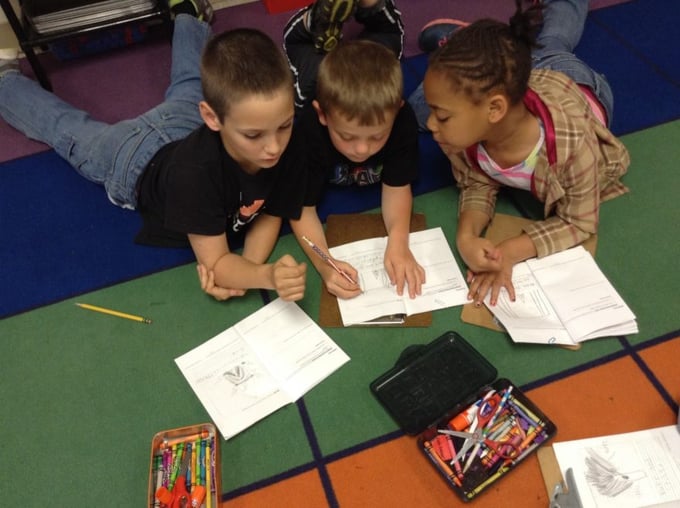Leslie is a first grade teacher at Forest Acres Elementary in Easley, South Carolina. She is certified in early childhood and elementary education, earned an M.Ed, and is National Board certified as an early childhood generalist. She has earned a gifted and talented endorsement and is pursuing an endorsement in STEM education. Leslie works to integrate the latest technology into the early childhood classroom to create an environment of independent, 21st-century learners. Leslie is married and has two small children.
Light and Sound: First Impressions
The very first PLTW Launch module I taught in first grade was Light and Sound. I had been trained the summer before I started and wasn’t sure how the first graders would receive the lesson. On the first day, I read the ebook story about the three kids and introduced the problem; that was all we had time to do. The next day, I pulled up the story, and the children cheered! They were excited to begin working on the problem. Each sequential lesson was equally exciting for them AND for me! We called it “engineer” time, and so many of them truly felt like engineers.
Light and Sound: Key Takeaways
The biggest takeaway from these modules was the design process. So many times, students just want to find the right answer. These modules and the design process emphasize great ideas, testing them out, and revising. This life skill is essential for young learners in the fast-paced 21st century. Students also learned skills covered in the science standards. They practiced reading and writing through the Launch Logs and the research they did.
Light and Sound Best Practices
One of the best practices I found when teaching these modules is the full integration of the lessons throughout all of the content areas. For example, I used the PLTW modules during my reading time by incorporating many nonfiction texts to help students gain background knowledge. We also read fictional texts like “No Moon, No Milk” by Chris Babcock and incorporated writing activities that pushed students to think about space through the eyes of different characters.
PLTW’s blog is intended to serve as a forum for ideas and perspectives from across our network. The opinions expressed are those of this guest author.

